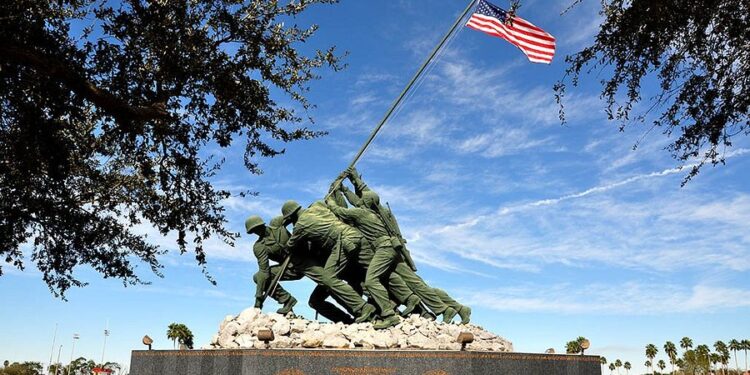The Battle of Iwo Jima began on February 19, 1945, as the United States Fifth Fleet launched one of the most significant amphibious operations of World War II. Operation Detachment, as it was officially known, targeted the strategic Japanese-held island of Iwo Jima, located roughly 750 miles south of Tokyo.
The invasion force consisted of more than 450 ships supporting 70,000 U.S. Marines from the 3rd, 4th, and 5th Marine Divisions. Before the main assault, U.S. naval forces conducted a devastating three-day bombardment of the island, though its effectiveness was limited by the extensive network of underground bunkers and tunnels constructed by the Japanese defenders.
At 0900 hours, the first wave of Marines landed on the southeastern beaches of Iwo Jima, initially encountering little resistance. However, this silence was deceptive. Japanese General Tadamichi Kuribayashi had prepared an elaborate defensive strategy, instructing his 21,000 troops to hold their fire until American forces advanced inland. When they did, the Japanese unleashed a devastating barrage from hidden artillery positions and fortified bunkers.
The volcanic ash beaches of Iwo Jima proved treacherous for both men and machines. Landing craft struggled to maintain position in the surf, while Marines found their vehicles and equipment bogging down in the soft black sand. Despite these challenges, by nightfall of the first day, approximately 30,000 Marines had established a beachhead, though at a cost of 2,420 casualties.
One of the invasion’s primary objectives was capturing Mount Suribachi, the 556-foot dormant volcano that dominated the island’s southern tip. This position gave Japanese defenders a commanding view of the entire island and the surrounding waters. The summit would become the site of one of the war’s most iconic moments when, on February 23, Marines raised the American flag atop Mount Suribachi, immortalized in Joe Rosenthal’s famous photograph.
The invasion of Iwo Jima represented a crucial step in the Allied advance toward Japan. The island’s airfields would provide emergency landing strips for B-29 bombers conducting raids on the Japanese mainland and serve as a base for fighter escorts. However, the price would be steep. The battle would continue for 36 days, resulting in over 26,000 American casualties, including nearly 7,000 killed. Of the 21,000 Japanese defenders, only 216 were taken prisoner, with the rest fighting to the death in accordance with their code of bushido.
The invasion of Iwo Jima stands as a testament to both the determination of the American forces and the fierce resistance of the Japanese defenders, marking one of the bloodiest battles in Marine Corps history.
newshub



Recent Comments